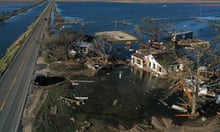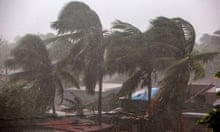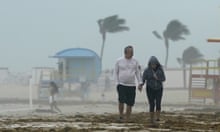At least six people have been killed and more than 60,000 evacuated after Hurricane Iota struck Nicaragua, prompting Joe Biden to say the surge in the number of powerful storms meant fighting the climate crisis was vital.
Reports in the Nicaraguan press said at least three children were among the victims as the hurricane hammered the Central American country on Tuesday after making landfall the previous night.
La Prensa newspaper reported that two of the victims, siblings aged eight and 11, were swept away by a raging river south of the capital, Managua. Thirteen people were reported missing after a landslide near the city of Matagalpa, including a 12-year-old girl.
Images from the Caribbean town of Bilwi showed the terrifying punch of a hurricane that wrenched utility poles from the ground and tore zinc roofs from seaside homes.
“The kids were screaming with fear. It was horrible,” Fatima Thomas Pérez told La Prensa, recalling the moment a tree came crashing down in her garden. “The ground shook just like an earthquake. We thought we were all going to die.”
As the hurricane swept west towards Honduras and El Salvador, Nicaragua’s vice-president said “catastrophic” physical damage had been caused by what authorities called the most powerful storm ever to hit the country. “Thank God more lives have not been lost,” Rosario Murillo said.
Meteorologists say this year’s Atlantic hurricane season, which runs from June to November, is the most active in history. There have been 30 named storms and 13 hurricanes in the six-month period, six of which had the potential to cause significant loss of life and damage.

Two of those major hurricanes, Iota and Eta, have struck in the past two weeks, with the latter killing scores of people and causing widespread destruction after making landfall on 3 November. Experts believe the climate crisis has contributed to the record-breaking number of powerful storms.
Biden tweeted on Tuesday: “I’m keeping in my prayers all of our friends and neighbours in Hurricane Iota’s path and those impacted by Hurricane Eta across Central America.
“The increasing frequency of these powerful storms is another reason that fighting climate change will be one of my top priorities.”








